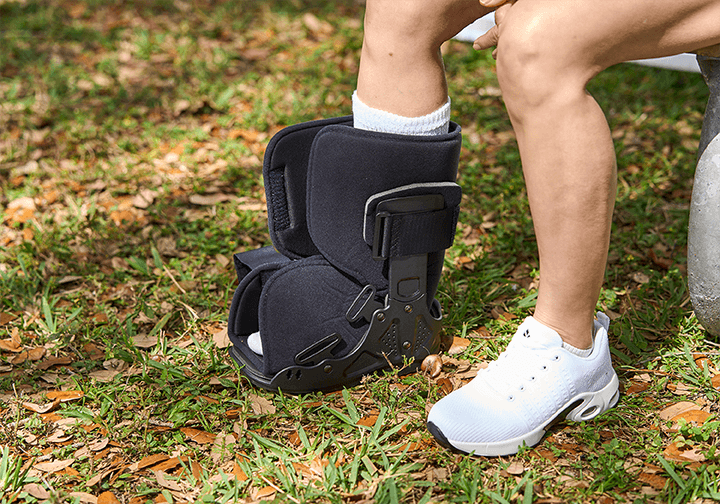How to Choose and Wear a Foot Support
It may begin as a twinge in your heel, or a pain in the ball of your foot, or just a feeling that you can’t stand on your feet as long as you used to. If you experience foot pain, don’t ignore it! There are many kinds of foot supports that can provide lasting relief. You just have to choose the right one.

Types of Foot Supports/Orthotics
Foot supports fall into two categories: over-the-counter shoe inserts and prescription orthotics.
Shoe inserts are any non-prescription foot supports meant to help minor ailments. They can cushion your feet, support your arches, and relieve pain, but they aren’t meant to treat serious biomechanical foot problems.
- Arch supports, whether for flat feet or high arches, can reduce pain and relieve pressure on other parts of the foot.
- Heel cups absorb shocks and reduce pain in the heel.
- Heel lifts reduce strain on the calf muscle and Achilles tendon, helping conditions such as tendonitis, plantar fasciitis, and heel spurs.
- Insoles add extra cushioning and support to your shoes. Supportive or sport insoles help to correct misalignment, supination or overpronation. Cushion insoles are intended for general comfort.
- Metatarsal pads, or met pads, relieve pain in the balls of the feet by cushioning the metatarsal bones. They’re recommended for conditions including metatarsalgia (a catch-all category for forefoot pain), bursitis, rheumatoid arthritis, neuromas and plantar warts.
Prescription orthotics are custom-made for your foot, helping to relieve specific foot ailments.
- Functional orthotics are designed to align the foot in a neutral position, correcting its position and preventing abnormal movements. These orthotics may help treat foot pain or injuries, such as shin splints or tendinitis.
- Accommodative orthotics are designed to provide additional cushioning and support for conditions such as diabetic foot ulcers, heel pain, and arthritis.
How to Choose a Foot Support
Pay attention to where you feel pain: the heel, the ball of your foot, your arches or somewhere else. Is that discomfort only present when wearing certain shoes, such as high heels?
Then, look for a foot support that’s intended for that specific problem. Some supports have multiple functions, such as arch support with metatarsal pads.
Also, you need to know your foot structure. Do you have high arches or flat feet? Do you overpronate (meaning your foot rolls inward when you move) or underpronate (meaning the foot rolls outward)? It may be wise to get a professional consultation with a podiatrist, who can diagnose your foot problems and recommend the best foot supports.


How to Wear Foot Supports
- Get an insole or arch support that’s sized correctly for your foot. If it’s too big or too small, the supports won’t align with your foot.
- If you’re wearing an arch support, make sure it’s not too high. Too-high arch support can pressure and pain in a different part of your foot.
- If you’re new to using heel lifts, you may want to start with a low lift and then slowly add layers to raise the height.
- For metatarsal pads, correct placement is essential. They aren’t worn on the ball of the foot, but rather just behind it, improving weight distribution.
- Match the insole to your footwear. A high-volume insole should be worn with a larger-volume shoe, like hiking boots. Slimmer footwear requires low-volume insoles.
- Remove the existing insole or sock liner from your shoes before inserting the insole.
- Wear foot supports in both shoes, even if you only feel pain in one foot. The exception is heel lifts worn to correct a discrepancy in leg length.
- Take good care of your insoles. You can extend their wear time by airing them out and/or washing them occasionally with gentle detergent.
Related Products

